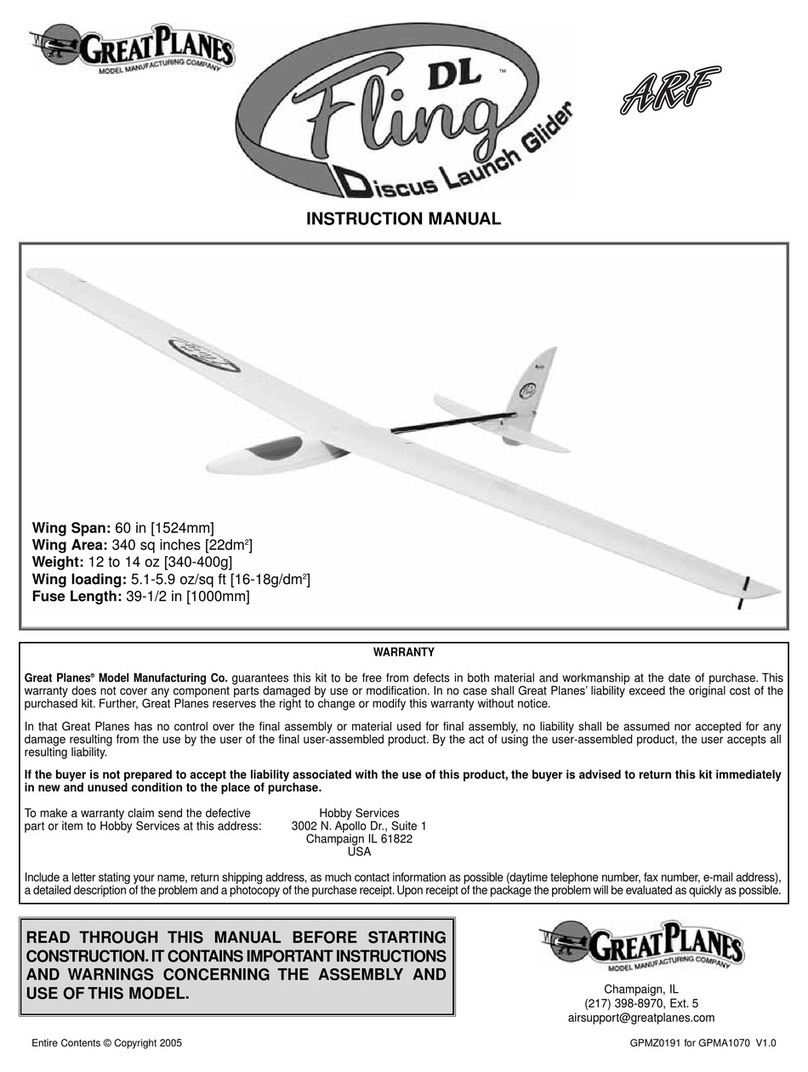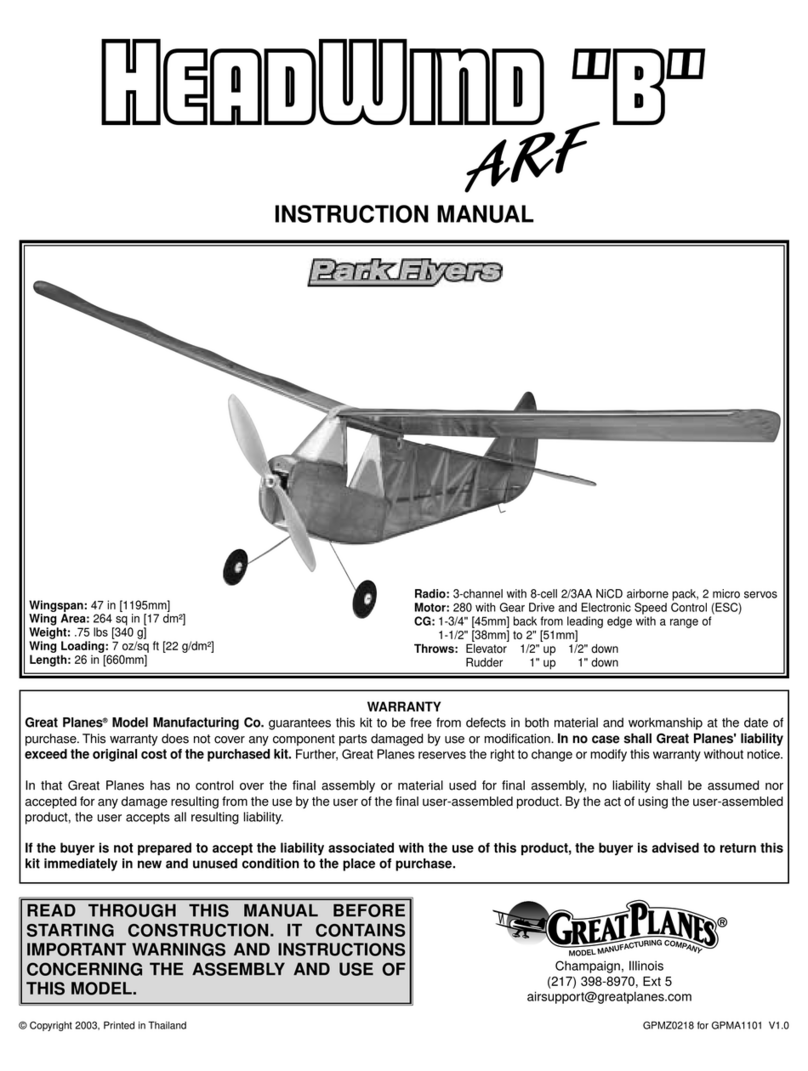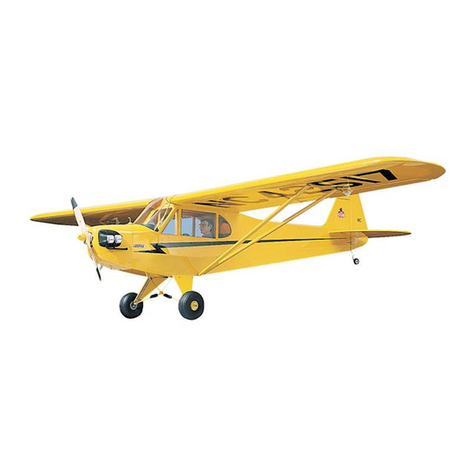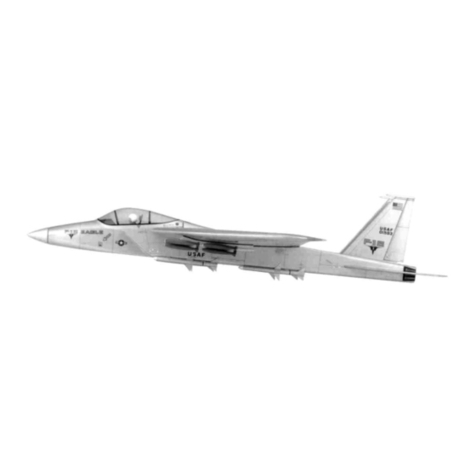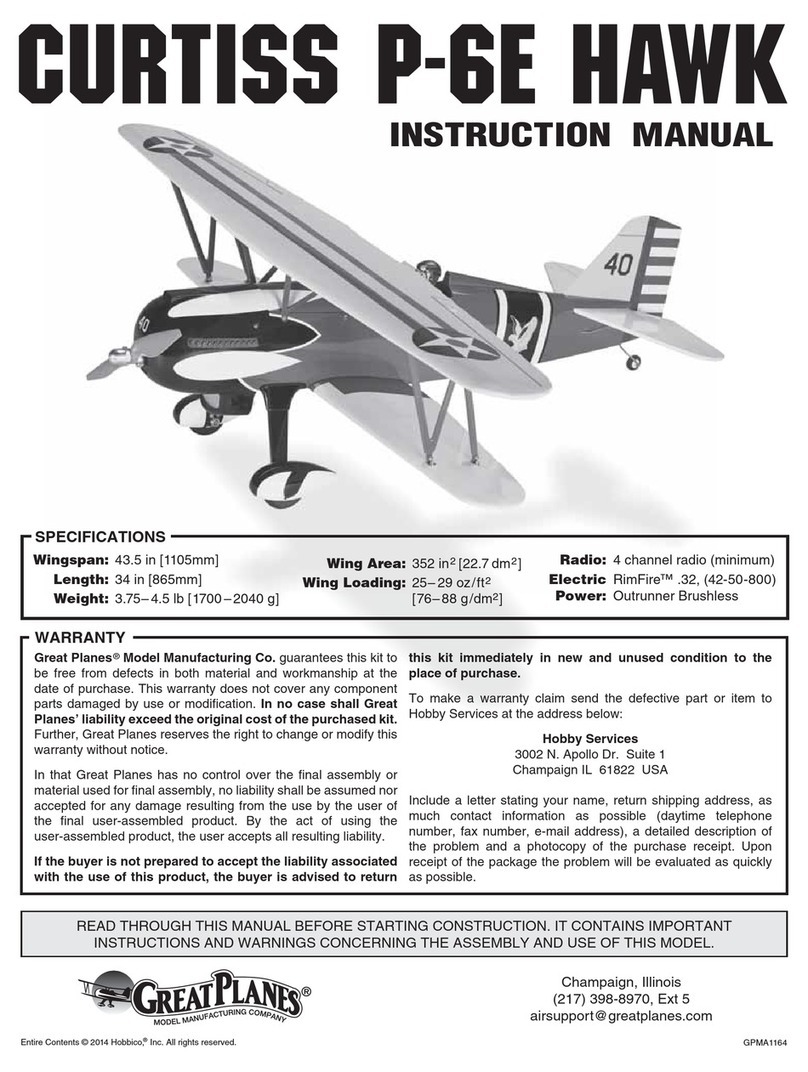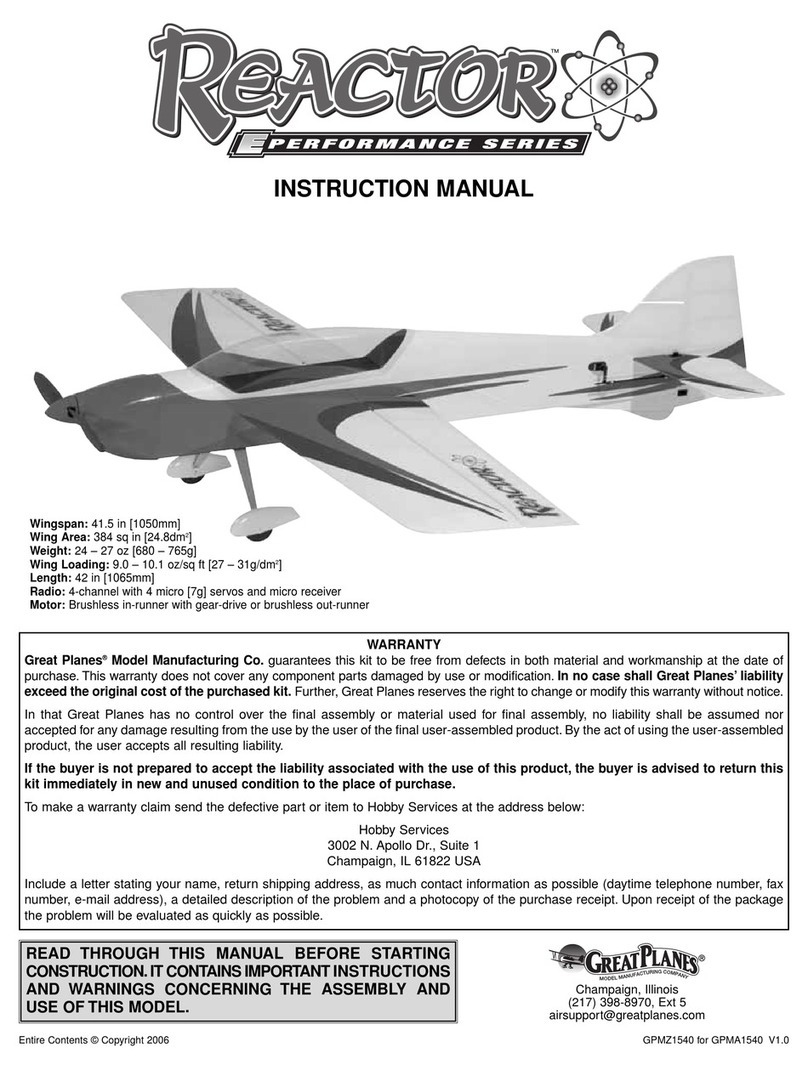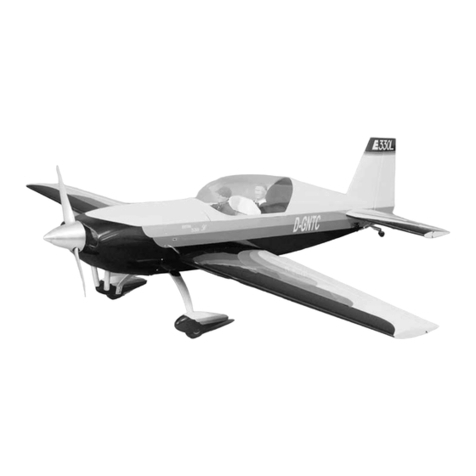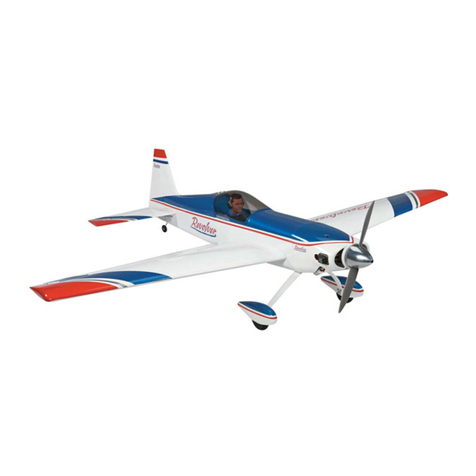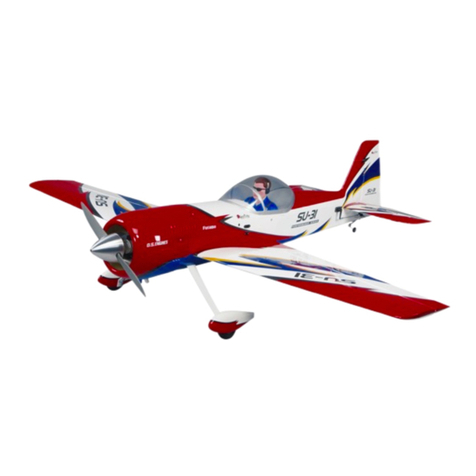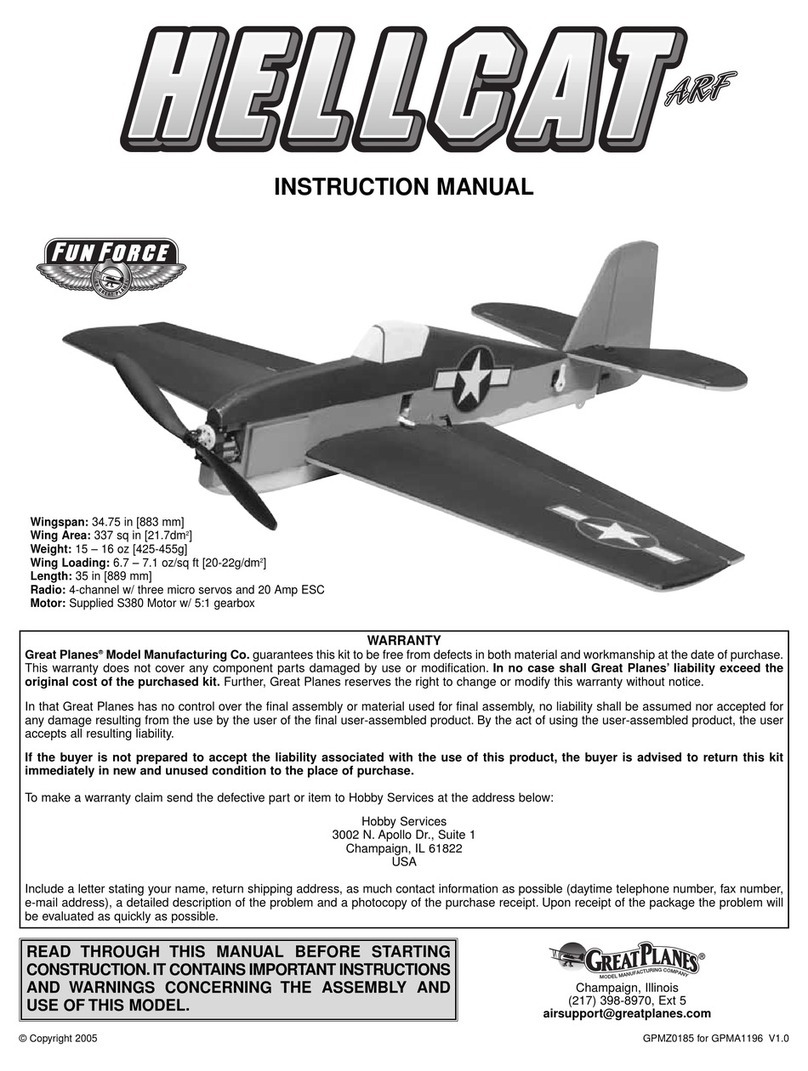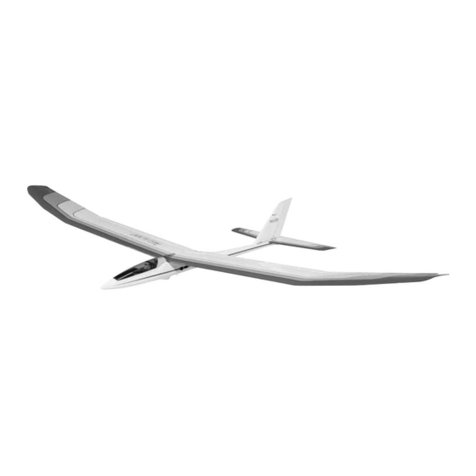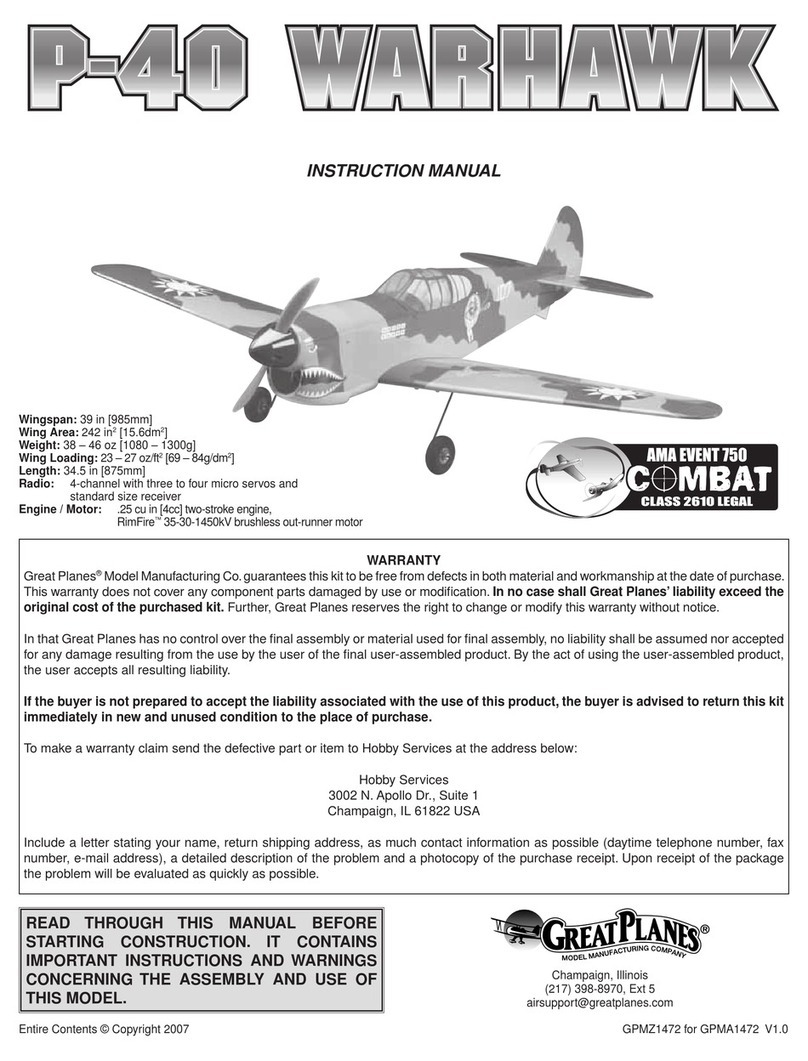Introduction
......................................................................3
Precautions.......................................................................3
Decisions You Must
Make................................................3
Engine Selection
.........................................................3
Preparations
.....................................................................3
Required Accessories..................................................3
BuildingSupplies and Tools.........................................4
Optional Supplies andTools
........................................4
Types
of
Wood
.......................................................4
Common Abbreviations................................................4
BuildingNotes..............................................................5
Get Ready to
Build.......................................................5
Inch/MetricRuler..........................................................5
Die-Cut Patterns......................................................6&7
Buildthe TailSurfaces.....................................................8
Build
the Stabilizer
.......................................................8
Build the Elevator.........................................................8
Build the Fin. .
............................................................9
Buildthe Rudder..........................................................9
Hingethe TailSurfaces..............................................10
Finish the TailSurfaces..............................................10
Fitthe Torque Rods
...................................................11
Install Tailwheel Bracket on Rudder...........................11
Buildthe Bottom Wing...................................................12
Wing Preassembly.....................................................12
Buildthe Wing.. . . . ...............................................12
Sheet the Topof the Wing..........................................14
Sheet the Bottom of the Wing....................................15
Complete the Bottom Wing........................................16
Build
the Ailerons
.......................................................17
Build
the Fuselage
.........................................................18
Fuselage Preassembly.. ...........................................18
Assemble the Fuselage Sides...................................19
Install the Formers
.....................................................20
Mount the Wing on the Fuselage...............................22
Installthe Stabilizer and Fin.....................................23
Assemble the Turtledeck............................................24
Buildthe Top Deck.....................................................25
Buildthe Top Wing.........................................................27
Wing Preassembly.....................................................27
Build
the Wing ...
....
..............................................27
Sheet the Topof the Wing..........................................30
Install the Aft Root Ribs..............................................30
Finish Sheeting the Top
of
the Wing
..........................31
Sheet the Bottom of the Wing.. .................................31
Complete the Bottom of the Wing ..............................32
Build
the Ailerons
.......................................................33
Engine
Installation
.........................................................33
Assemble the Plastic Parts
...........................................34
Assemble the Wheel Pants........................................34
Assemble the Cowl
...................................................36
Balance the ModelLaterally..........................................37
Covering.......................................................................37
Prepare the Surface..................................................37
Covering Technique...................................................37
Suggested Covering Sequence................................38
Painting........................................................................38
Final
Hookups and Checks
...........................................38
Install
the Hinges
.......................................................38
Installthe Hardware...................................................39
Attach the Canopy .....................................................39
Radio Installation ...........................................................40
Install the Rudder, Elevator andThrottle Servo .........40
Install the Aileron Servo
.............................................42
Check the Wing Incidence.............................................43
Set the Control Throws.................................................43
Balance
Your
Model
.......................................................44
Preflight...........................................................................44
Charge the Batteries..................................................44
Balance the Propeller.................................................45
Find
a
Safe Place to
Fly.............................................45
Ground Check the Model
...........................................45
Range Check Your Radio...........................................45
Engine Safety Precautions........................................45
AMA Safety Code............................................................46
General.....................................................................46
Radio
Control............................................................46
Flying...............................................................................46
Takeoff.......................................................................47
Flight.........................................................................47
Landing.....................................................................47
Flight
Log...................................................................47
2-View Drawing
...............................................Back
Cover
Your Ultimate 40 isnota toy, butrather a sophisticated,
workingmodel that functionsverymuch like a fullsize
airplaneBecauseofitsrealisticperformance,the
Ultimate40, ifnot assembledand operatedcorrectly,
could possibly cause injury to yourselfor spectators and
damage property.
Ifthis isyour firstbiplane model, we recommend that you
get helpfroman experienced, knowledgeable modeler with
your firstflights. You'll learn fasterand avoid risking your
model before you're ready to take the controls for yourself.
For informationon flyingclubs inyour area,you can
contact the national Academy of Model Aeronautics (AMA),
whichhas more than2,500 charteredclubsacrossthe
countryContactAMAat the address or toll-freephone
number below:
Academy of ModelAeronautics
5151 East Memorial Drive
Muncie, IN47302-9252
Tele (800)435-9262
Fax (765) 741-0057
Orviatheinternetat:http://www.modelaircraft.org
2
